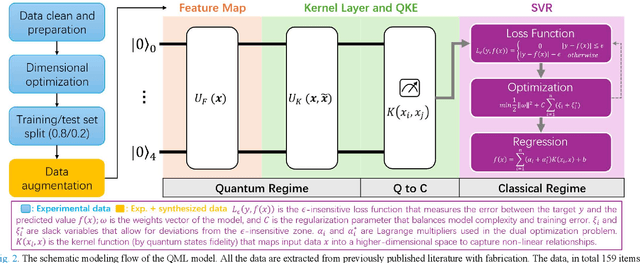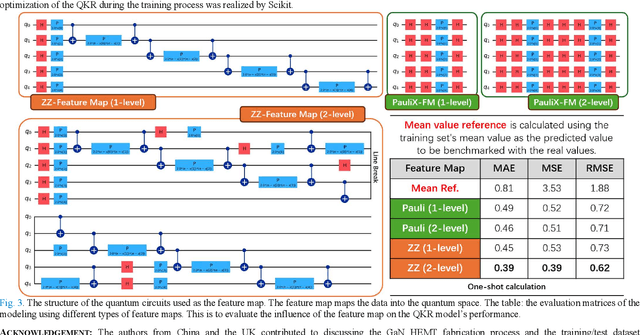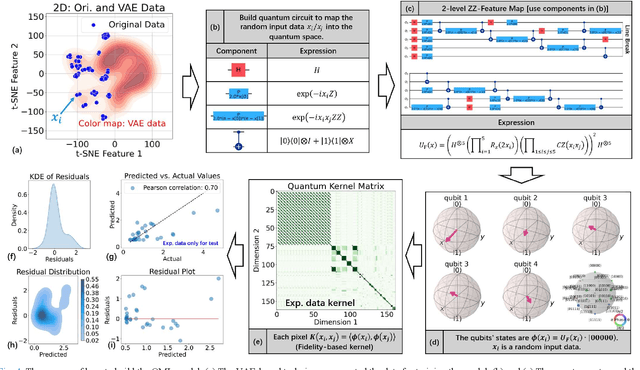Ross C. C. Leon
Quantum Machine Learning for Semiconductor Fabrication: Modeling GaN HEMT Contact Process
Sep 17, 2024



Abstract:This paper pioneers the use of quantum machine learning (QML) for modeling the Ohmic contact process in GaN high-electron-mobility transistors (HEMTs) for the first time. Utilizing data from 159 devices and variational auto-encoder-based augmentation, we developed a quantum kernel-based regressor (QKR) with a 2-level ZZ-feature map. Benchmarking against six classical machine learning (CML) models, our QKR consistently demonstrated the lowest mean absolute error (MAE), mean squared error (MSE), and root mean squared error (RMSE). Repeated statistical analysis confirmed its robustness. Additionally, experiments verified an MAE of 0.314 ohm-mm, underscoring the QKR's superior performance and potential for semiconductor applications, and demonstrating significant advancements over traditional CML methods.
Improving Machine Learning-Based Modeling of Semiconductor Devices by Data Self-Augmentation
May 25, 2021



Abstract:In the electronics industry, introducing Machine Learning (ML)-based techniques can enhance Technology Computer-Aided Design (TCAD) methods. However, the performance of ML models is highly dependent on their training datasets. Particularly in the semiconductor industry, given the fact that the fabrication process of semiconductor devices is complicated and expensive, it is of great difficulty to obtain datasets with sufficient size and good quality. In this paper, we propose a strategy for improving ML-based device modeling by data self-augmentation using variational autoencoder-based techniques, where initially only a few experimental data points are required and TCAD tools are not essential. Taking a deep neural network-based prediction task of the Ohmic resistance value in Gallium Nitride devices as an example, we apply our proposed strategy to augment data points and achieve a reduction in the mean absolute error of predicting the experimental results by up to 70%. The proposed method could be easily modified for different tasks, rendering it of high interest to the semiconductor industry in general.
 Add to Chrome
Add to Chrome Add to Firefox
Add to Firefox Add to Edge
Add to Edge